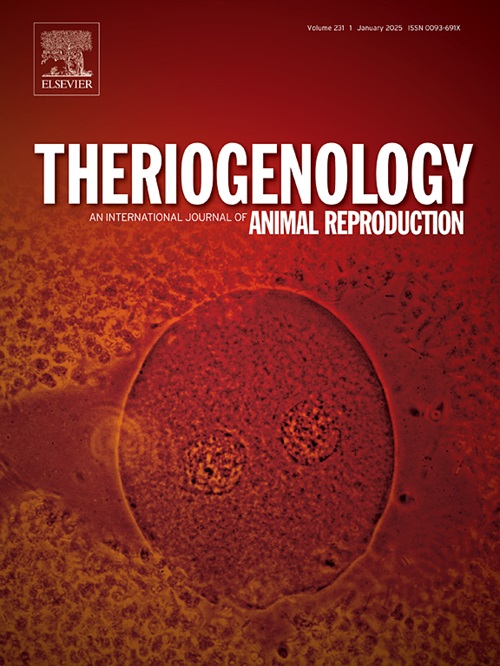评估牛胎盘外植体是否适合用于犬新孢子虫感染中宿主与病原体相互作用的体内外建模。
IF 2.4
2区 农林科学
Q3 REPRODUCTIVE BIOLOGY
引用次数: 0
摘要
牛流产通常是由犬新孢子菌等传染性病原体引起的,造成了巨大的经济损失。研究妊娠母牛宿主与病原体之间的相互作用具有挑战性,现有的细胞培养缺乏真实组织的复杂性。为了缩小体外和体内模型之间的差距,我们探索了使用低温保存的牛胎盘外植体。在成功开发了羊胎盘外植体的获取、培养和低温保存方案的基础上,我们将这些方法应用于牛组织。在这里,我们比较了新鲜和低温保存的牛外植体,评估了它们在培养时间内的完整性和功能性。此外,我们还研究了它们对犬结核感染的敏感性。我们的研究结果表明,与绵羊外植体相比,牛外植体在培养过程中退化得更快,表现出存活能力和功能减弱。低温保存进一步加剧了这种退化。虽然新鲜外植体能成功感染犬线虫,但寄生虫的复制受到限制。值得注意的是,低温保存降低了感染效率。这项开创性工作为开发体外模型研究牛的生殖病原体铺平了道路。然而,进一步优化模型至关重要。这些改进的模型将有可能大大减少研究中对动物的依赖。本文章由计算机程序翻译,如有差异,请以英文原文为准。
Evaluating the suitability of placental bovine explants for ex vivo modelling of host-pathogen interactions in Neospora caninum infections
Bovine abortions, often caused by infectious agents like Neospora caninum, inflict substantial economic losses. Studying host-pathogen interactions in pregnant cows is challenging, and existing cell cultures lack the intricate complexity of real tissues. To bridge the gap between in vitro and in vivo models, we explored the use of cryopreserved bovine placental explants. Building upon our successful development of protocols for obtaining, culturing, and cryopreserving sheep placental explants, we applied these methods to bovine tissues. Here, we compared fresh and cryopreserved bovine explants, evaluating their integrity and functionality over culture time. Additionally, we investigated their susceptibility to N. caninum infection. Our findings revealed that bovine explants deteriorate faster in culture compared to sheep explants, exhibiting diminished viability and function. Cryopreservation further exacerbated this deterioration. While fresh explants were successfully infected with N. caninum, parasite replication was limited. Notably, cryopreservation reduced infection efficiency. This pioneering work paves the way for developing ex vivo models to study reproductive pathogens in cattle. However, further optimization of the model is essential. These improved models will have the potential to significantly reduce the reliance on animals in research.
求助全文
通过发布文献求助,成功后即可免费获取论文全文。
去求助
来源期刊

Theriogenology
农林科学-生殖生物学
CiteScore
5.50
自引率
14.30%
发文量
387
审稿时长
72 days
期刊介绍:
Theriogenology provides an international forum for researchers, clinicians, and industry professionals in animal reproductive biology. This acclaimed journal publishes articles on a wide range of topics in reproductive and developmental biology, of domestic mammal, avian, and aquatic species as well as wild species which are the object of veterinary care in research or conservation programs.
 求助内容:
求助内容: 应助结果提醒方式:
应助结果提醒方式:


